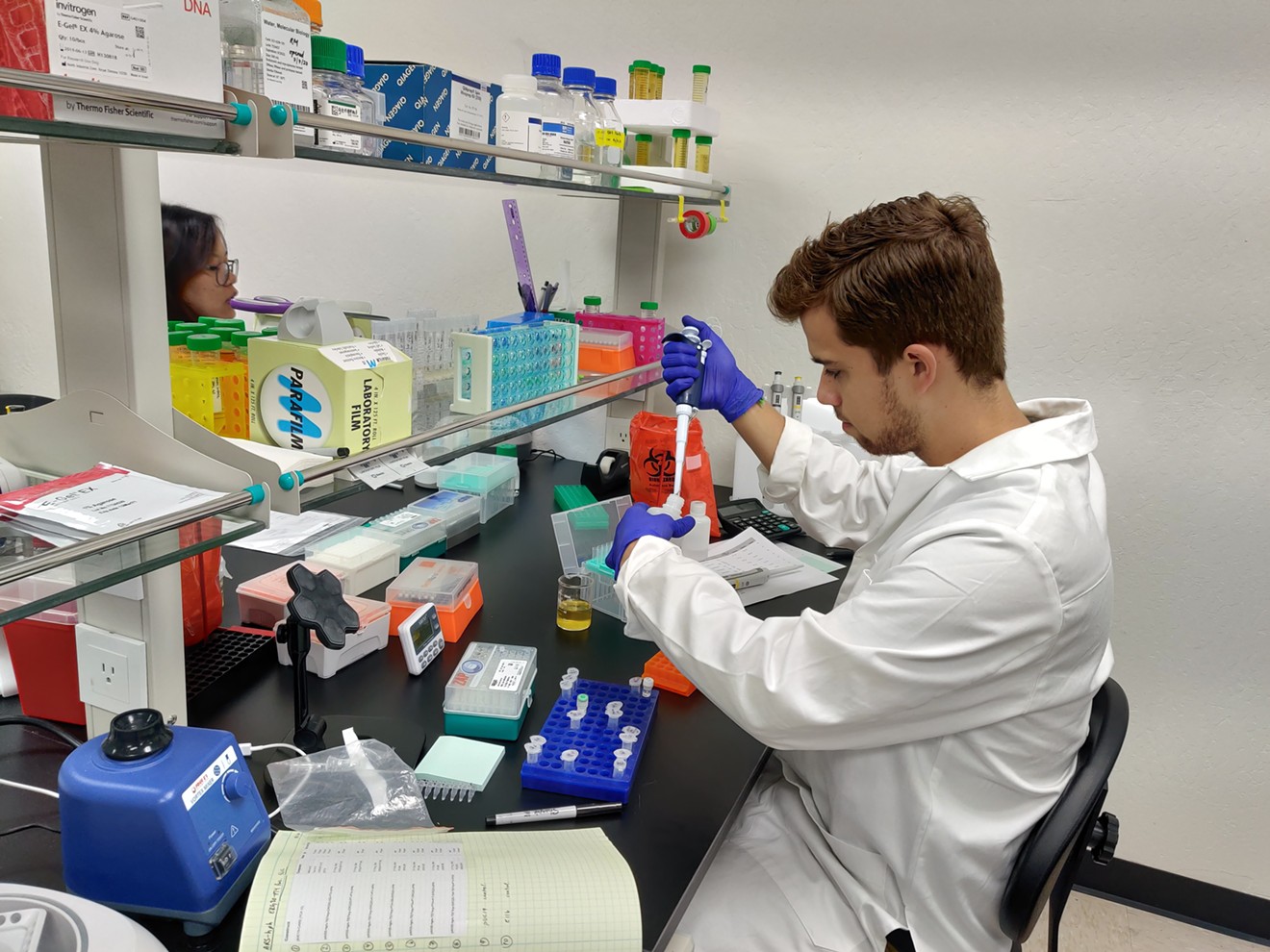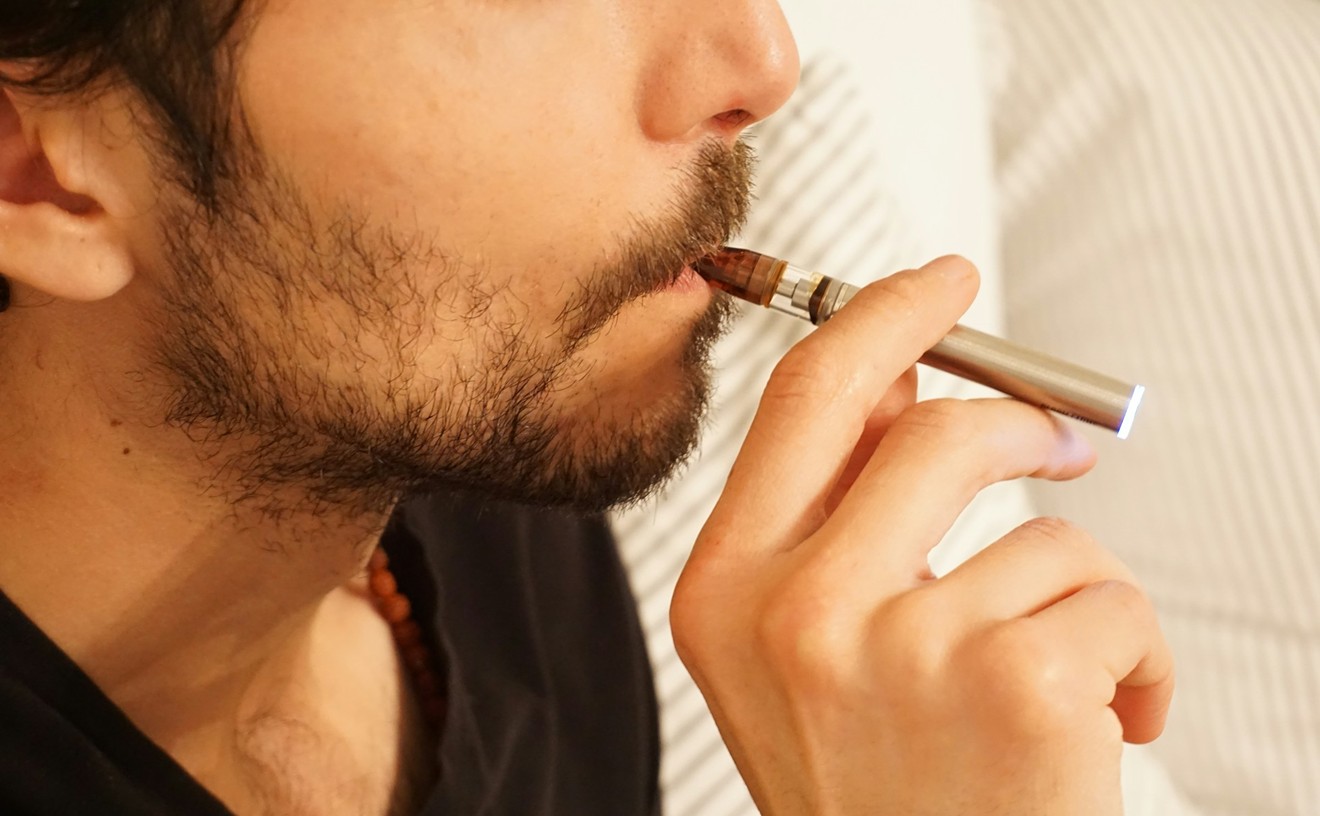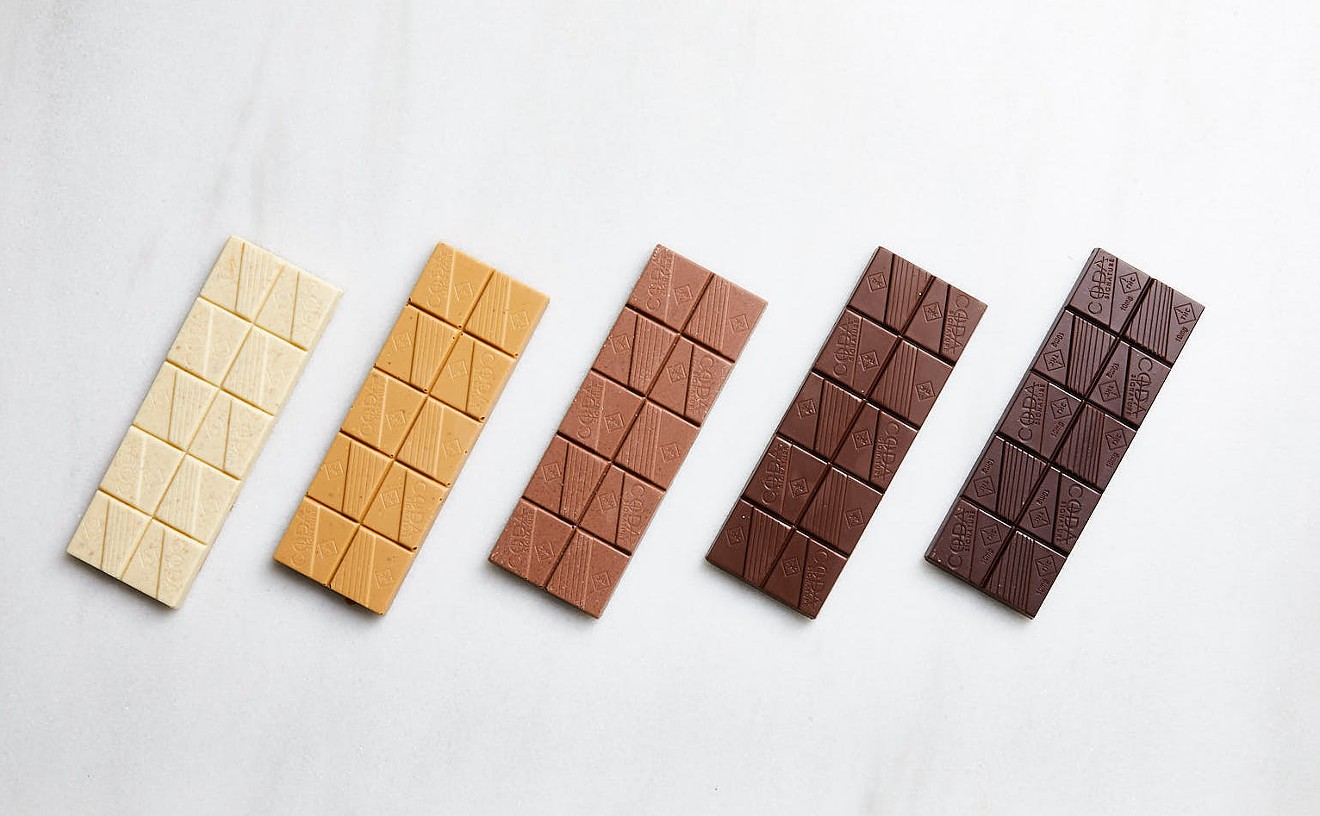You don't have to be a pot enthusiast to know about THC or CBD, but they're not the only cannabinoid worth considering. Lesser-known cannabinoids with unique health and wellness properties, such as CBG, CBN and THCV, are produced naturally in marijuana plants — but at extremely low levels, so large numbers of cannabis plants are required to make extracts, which come with a high price.
Even so, like CBD, rare cannabinoids could find a place in wellness products, and they've been the focus of emerging pharmacological studies. In 2019, the National Center for Complementary and Integrative Health announced that it would fund research into the therapeutic uses of rare cannabinoids that target the endocannabinoid system, a series of neurotransmitter receptors in the central nervous system that include the brain.
One biotech company is looking to shake up the cannabinoid-product industry by using biosynthesis to produce rare cannabinoids at a fraction of their current price. Employing a specialized strain of yeast called Yarrowia lipolytica, California company Biomedican extracts pharmaceutical-grade cannabinoids that are biologically identical to those extracted from plants. To learn more about the science and business sides of biosynthetic cannabinoids, Westword spoke with Biomedican president Dennis O'Neill and CEO Max Mikheev.
Westword: What is a rare cannabinoid, and what makes it different from more commonly known cannabinoids like CBD or THC?
Dennis O'Neill: CBD has every type of [rare] cannabinoid in it. The problem is that these rare cannabinoids —CBG, CBN, THC-V, which are the most popular outside of CBD now — they show up in very trace amounts in the actual [cannabis] plant, as well as in CBD. There is a significant amount of evidence that shows that there are health benefits beyond CBD to treat a multitude of medical conditions utilizing rare cannabinoids.
Why use yeast for cannabinoid production? What about yeast allows for biosynthetic extractions?
Max Mikheev: In our case, we use yeast for production of cannabinoids. The benefit of yeast compared to all [other] organisms is a little bit different. The yeast which we are using is for the production of oils and the production of cannabinoids. In nature, cannabis plants produce cannabinoids in drops of oil, so it’s exactly what we’re trying to produce inside our yeast.
Dennis O'Neill: Basically, the reason we use this very, very specialized yeast, and the reason that we have patents pending for this process, is that utilizing this specialized yeast gives us the highest yield possible. When you’re talking about high yield, the higher the yield you have, the more purity you have. Not only that, it drops your costs. So what we have right now utilizing this process is what’s called high-percent dry mass yield. Of all the competitors in this marketplace, they are all way under 1 percent yield. So as of now, our yields are about ten times better than anyone in the space, and that’s why we’re using this specialized yeast. It gives you the highest yields possible for biosynthesizing rare cannabinoids.
Biosynthetic cannabinoids are cheaper than plant-derived cannabinoids. As their biosynthetic products become more popular, what does that mean for the plant-grown cannabinoid market? Do you think there will still be a place for hemp farms?
Dennis O'Neill: The people who are growing [cannabis] for people to smoke and for CBD, I think they will be fine. There aren't a lot of reasons to biosynthesize CBD. These growers are growing massive amounts of cannabis to get very, very small amounts of these cannabinoids. What we’re proposing is that the companies that have large distribution networks, what they can do is buy our rare cannabinoid, they can add it into their CBD, or they can develop new lines of products around our compounds. That way, they can still grow for smoking it and CBD, and it’ll be far more efficient for time, efforts and return for them to actually use us as a supplier rather than try to grow it themselves.
There’s no way they can compete with us to produce these rare cannabinoids, mostly because they show up in such small amounts in the plant that you have to grow enormous amounts of cannabis just to end up with a little amount of these rare cannabinoids. I think that they’ll co-exist around the people who are growing for flower and CBD, and the companies with large distribution networks will consider us a very valuable partner.
What advantages do rare cannabinoids have over CBD?
Dennis O'Neill: CBG and CBGA are considered to be ‘the mother of all cannabinoids,’ since that’s where all other cannabinoids derive from. Basically, the benefits of CBG and CBGA is that they are non-psychoactive, and the known health benefits are that it’s anti-inflammatory, anti-microbial, and it has antioxidant functions. It helps fight inflammation, pain and nausea, as well as working to slow the proliferation of cancer cells. That’s the next big rare cannabinoid coming into this market.
We do have other ones that we are in the process of producing now, which are THCV and THCA. The benefits of THCV is that it’s an appetite suppressant. It may help diabetes, it may help with panic attacks, it may help with Alzheimer's, motor control, with tremors and brain lesions associated with Alzheimer's, and it stimulates bone growth. Those are the known health benefits of THCV.
The next one we are working on is CBN. We should have THCV and CBN ready for large-scale production within the first or second quarter of next year. CBN has potential health benefits for sleep, as a pain reliever, as an antibiotic, as an anti-inflammatory, as an appetite stimulant, as a cancer fighter, as an anti-convulsant, for bone-healing and growth, and for glaucoma therapy. There are significant clinical trials that have been completed on CBG and CBGA; there are ongoing clinical trials for CBN and THCV, and as we get more and more data, these potential health benefits are being confirmed through the data.
CBD can be found in gas stations, grocery stores and even restaurants. Could lesser-known cannabinoids ever take on a similar role?
Dennis O'Neill: As the market slowly but surely became educated on CBD, we began to see CBD continue to grow; in fact, the CBD market is expected to be $146 billion globally by 2025. What we think will happen, just like CBD, is that [with] these next-generation [cannabinoids], which are CBG, CBN, THCV, you will see a percentage of the people using CBD who will want the next thing.
We expect that these rare cannabinoids will be as big as the CBD market in about ten years. I think that the combination of adding these rare cannabinoids into CBD will have some benefit, as well — mostly because of the additional health benefits that you would get from taking these rare cannabinoids rather than just taking CBD. Just like everything else, if it’s more effective, it will become very, very, very popular. I don’t know if it will ever be as popular as CBD on its own, but I think these rare cannabinoids will be as big within the next ten years.
Biomedican says it has produced a new cannabinoid, the sesqui-cannabinoid. What can you share about that?
Dr. Max Mikheev: Look, right now it is already known that there are 200 cannabinoids, and by some data, the estimated amount of total cannabinoids is around 500 or even 600 [including cannabinoids that have not been discovered]. We found out how to produce sesqui-cannabinoid. This cannabinoid was first discovered in 2011; there’s one publication where they describe this sesqui-CBG, and they found it in hemp in Europe. Several other papers mention that they found hemp sesqui-CBG, but not much else about sesqui-cannabinoids. Before us, no one else knew how to produce sesqui-cannabinoids, so most likely it will be possible to produce sesqui-CBG, sesqui-CBD, sesqui-THC. Medical properties for these cannabinoids is still unknown, so it will require some additional clinical studies to find out the benefits.
Dennis O'Neill: [Scientists] expect that there are probably 400 or 500 cannabinoids out there. I think that as we go forward, there are going to be more and more new classes of cannabinoids that are going to be discovered. This is pioneering a new class of cannabinoids, and although we don’t know all the health benefits to these sesqui-cannabinoids, we believe that they may have a lot of the same attributes of CBG and some of the other rare cannabinoids. But they’ll also have some additional attributes that we believe could make them more effective than a regular CBD or a THC-V. It’s going to take a couple of years to get all the research to get it ready for the market, and then it will take some time for it to get popular to create demand for it. But for the people that are really interested in researching new breakthroughs, this is probably one of the biggest and best opportunities out there.
Where do you see the rare cannabinoid market and Biomedican going in the future?
Dennis O'Neill: We have discovered a way to produce these rare cannabinoids that are pharmaceutical-grade. Basically, they are better, safer and cheaper than using traditional means. They are 100 percent organic, 100 percent natural and non-GMO. It’s bio-identical, meaning it is the exact same as the chemical found in nature, and we can do it for significantly less money. I think it’s going to give the world an opportunity to afford to use these rare cannabinoids to treat multiple health conditions at an affordable price that doesn’t price out a significant amount of people.
Dr. Max Mikheev: I believe that cannabinoids really have huge potential because they can go to the brain. Not many medical drugs have an effect inside the brain. Some cannabinoids can be antibiotics, which work inside the brain.
[
{
"name": "Air - MediumRectangle - Inline Content - Mobile Display Size",
"component": "12017618",
"insertPoint": "2",
"requiredCountToDisplay": "2"
},{
"name": "Editor Picks",
"component": "17242653",
"insertPoint": "4",
"requiredCountToDisplay": "1"
},{
"name": "Inline Links",
"component": "18838239",
"insertPoint": "8th",
"startingPoint": 8,
"requiredCountToDisplay": "7",
"maxInsertions": 25
},{
"name": "Air - MediumRectangle - Combo - Inline Content",
"component": "17261320",
"insertPoint": "8th",
"startingPoint": 8,
"requiredCountToDisplay": "7",
"maxInsertions": 25
},{
"name": "Inline Links",
"component": "18838239",
"insertPoint": "8th",
"startingPoint": 12,
"requiredCountToDisplay": "11",
"maxInsertions": 25
},{
"name": "Air - Leaderboard Tower - Combo - Inline Content",
"component": "17261321",
"insertPoint": "8th",
"startingPoint": 12,
"requiredCountToDisplay": "11",
"maxInsertions": 25
}
]












